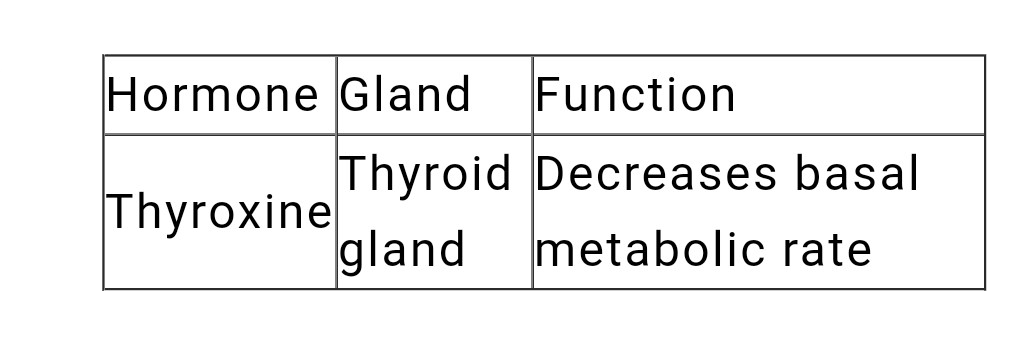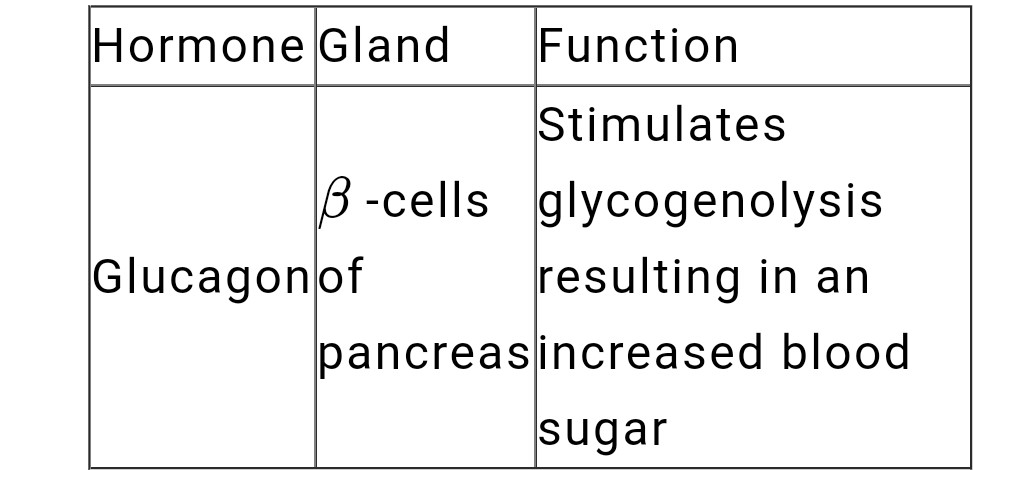Find out the CORRECT match.




The correct Answer is:C
To solve the question "Find out the CORRECT match," we will evaluate each option given in the problem step by step.
Step 1: Analyze the first option
- Hormone: Thyroxin
- Gland: Thyroid gland
- Function: Decrease basal metabolic rate
Evaluation:
Thyroxin (T4) is indeed produced by the thyroid gland, but its function is to increase the basal metabolic rate, not decrease it. Therefore, this option is incorrect.
Step 2: Analyze the second option
- Hormone: Glucagon
- Gland: Beta cells of pancreas
- Function: Stimulates glycogenolysis resulting in increased blood sugar
Evaluation:
Glucagon is produced by the alpha cells of the pancreas, not the beta cells (which produce insulin). While glucagon does stimulate glycogenolysis and increases blood sugar levels, the gland association is incorrect. Thus, this option is also incorrect.
Step 3: Analyze the third option
- Hormone: Calcitonin
- Gland: Thyroid gland
- Function: Decreases blood calcium level
Evaluation:
Calcitonin is produced by the thyroid gland and its function is to lower blood calcium levels by inhibiting osteoclast activity and decreasing renal reabsorption of calcium. This matches correctly. Therefore, this option is correct.
Step 4: Analyze the fourth option
- Hormone: Glucocorticoids
- Gland: Adrenal glands
- Function: Stimulates glucogenesis, lipolysis, and proteolysis
Evaluation:
Glucocorticoids are produced in the adrenal cortex of the adrenal glands. While the function described is accurate, the location of the gland is not specified correctly (it should mention the adrenal cortex). Hence, this option is incorrect.
Conclusion
After evaluating all options, the only correct match is:
- Calcitonin from the Thyroid gland with the function to decrease blood calcium level.
Final Answer:
The correct match is Calcitonin - Thyroid gland - Decreases blood calcium level.
---
- Hormone: Thyroxin
- Gland: Thyroid gland
- Function: Decrease basal metabolic rate
Thyroxin (T4) is indeed produced by the thyroid gland, but its function is to increase the basal metabolic rate, not decrease it. Therefore, this option is incorrect.
- Hormone: Glucagon
- Gland: Beta cells of pancreas
- Function: Stimulates glycogenolysis resulting in increased blood sugar
Glucagon is produced by the alpha cells of the pancreas, not the beta cells (which produce insulin). While glucagon does stimulate glycogenolysis and increases blood sugar levels, the gland association is incorrect. Thus, this option is also incorrect.
- Hormone: Calcitonin
- Gland: Thyroid gland
- Function: Decreases blood calcium level
Calcitonin is produced by the thyroid gland and its function is to lower blood calcium levels by inhibiting osteoclast activity and decreasing renal reabsorption of calcium. This matches correctly. Therefore, this option is correct.
- Hormone: Glucocorticoids
- Gland: Adrenal glands
- Function: Stimulates glucogenesis, lipolysis, and proteolysis
Glucocorticoids are produced in the adrenal cortex of the adrenal glands. While the function described is accurate, the location of the gland is not specified correctly (it should mention the adrenal cortex). Hence, this option is incorrect.
After evaluating all options, the only correct match is:
- Calcitonin from the Thyroid gland with the function to decrease blood calcium level.
The correct match is Calcitonin - Thyroid gland - Decreases blood calcium level.
